america
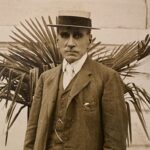
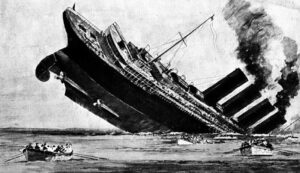 Born in Uruguay 1840, Ramon Artagaveytia was an Argentinian businessman. Even in 1840, businessmen had a need to travel periodically. That is why Artagaveytia found himself on board the ship America when it sank in December 1871. I’m sure the situation was absolutely terrifying, but Artagaveytia, became one of just 65 passengers to survive the disaster. He survived, only by jumping into the water and swimming to safety. I’m sure he felt very fortunate to survive his ordeal, but that is not to say that he was not traumatized. For years, Ramon Artagaveytia, was terrified of travel. Still, while he may have limited his travel, it was still essential at times.
Born in Uruguay 1840, Ramon Artagaveytia was an Argentinian businessman. Even in 1840, businessmen had a need to travel periodically. That is why Artagaveytia found himself on board the ship America when it sank in December 1871. I’m sure the situation was absolutely terrifying, but Artagaveytia, became one of just 65 passengers to survive the disaster. He survived, only by jumping into the water and swimming to safety. I’m sure he felt very fortunate to survive his ordeal, but that is not to say that he was not traumatized. For years, Ramon Artagaveytia, was terrified of travel. Still, while he may have limited his travel, it was still essential at times.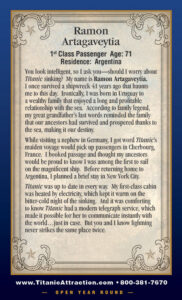
All that changed in 1912, when he wrote a letter to one of his cousins. In his letter, Artagaveytia, expressed relief, saying, “At last I will be able to travel, and, above all, I will be able to sleep calm. The sinking of the America was terrible!… Nightmares keep tormenting me. Even in the most quiet trips, I wake up in the middle of the night with terrible nightmares and always hearing the same fateful word: ‘Fire! Fire! Fire!’… I have even gotten to the point where I find myself standing in the deck with my lifebelt on….”
Artagaveytia was returning to the Americas, following a visit with his nephew in Berlin. As it turned out, the ship that finally put his mind at ease, was the “unsinkable” Titanic. When Artagaveytia arrived at Titanic, he was awed by its luxury. Everyone who saw Titanic was awed by its luxury. For Artagaveytia, one of Titanic’s greatest features was the fact that the ship had telegram capabilities. The promise of instant communication should a crisis arise, brought Artagaveytia great comfort.
Of course, as we all now know, Titanic would not be the ship that would make him safe. Titanic was simply not “unsinkable” because no ship is unsinkable. Titanic would hit that iceberg hiding in the darkness on April 14, 1912, and it would sink, in the early hours of April 15, 1912. Artagaveytia was reportedly seen on one of the decks of Titanic with two fellow passengers, looking as though he wasn’t concerned about the ship actually 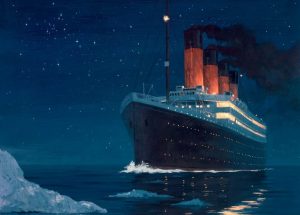
 sinking. He had accepted the story that so many people had believed…that somehow, this ship was “unsinkable.” Somehow, he and many others trusted the story above what should have been understood a known fact…that any ship can sink. This time, Artagaveytia would not escape. Artagaveytia’s body was found in the North Atlantic roughly one week after the ship sank to the bottom of the sea.
sinking. He had accepted the story that so many people had believed…that somehow, this ship was “unsinkable.” Somehow, he and many others trusted the story above what should have been understood a known fact…that any ship can sink. This time, Artagaveytia would not escape. Artagaveytia’s body was found in the North Atlantic roughly one week after the ship sank to the bottom of the sea.
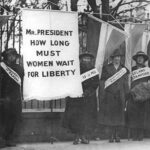
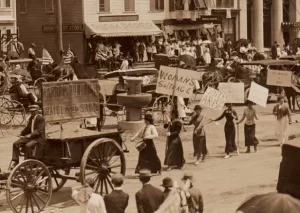 For many years, in the United States, women were not allowed to vote. Of course, many women didn’t have much of a formal education either. They might have gone to the sixth grade or something, but then it was thought that they should be at home with their mothers, learning to run a household, cook, and raise children. It was thought that political matters should be left to the men, “who understood these things.” I don’t believe that the men were being intentionally chauvinistic, but it was simply the way things were in that day and age.
For many years, in the United States, women were not allowed to vote. Of course, many women didn’t have much of a formal education either. They might have gone to the sixth grade or something, but then it was thought that they should be at home with their mothers, learning to run a household, cook, and raise children. It was thought that political matters should be left to the men, “who understood these things.” I don’t believe that the men were being intentionally chauvinistic, but it was simply the way things were in that day and age.
Lydia Taft became the first legal woman voter in colonial America in 1756. Under British rule in the Massachusetts Colony, in the New England town meeting in Uxbridge, Massachusetts, Taft voted on at least three occasions. The British law at the time stated that “unmarried white women who owned property could vote in New Jersey.” The law was in place from 1776 to 1807. After 1807, things pretty much went back to the “only men can possibly understand politics, sweetie” mentality, and women couldn’t vote until 1869, when Wyoming granted women the right to vote. Utah followed in 1870. Prior to the 19th Amendment, individual states made their own decisions on women’s suffrage, according to Time magazine. In fact, most states allowed women to vote in at least some elections prior to 1920, with only eight of 48 states completely disenfranchising women. Still, even when they weren’t allowed to vote, nothing prohibited women from running for office in many cases…and they often did. Thousands of women ran for office prior to 1920 and many of them won and served long before they were legally allowed to vote. 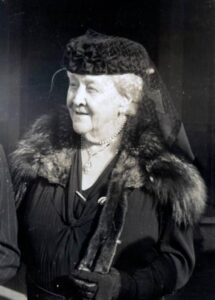
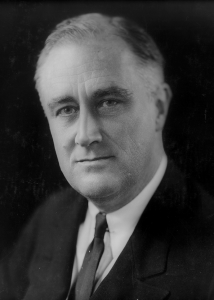
As far as presidents go, it hit me that while many wives, mothers, sisters, and daughters had a husband, son, brother, or father who was president, the first 31 of those presidents were elected without the votes of the women in their families. In fact, Franklin D Roosevelt’s mother was the first mom who got to cast a vote for her son as president. How strange that must have felt. I’m sure that anyone who finds themselves related to the President of the United States, might find life a little bit surreal, but that first ability to vote for that family member…wow!! Of course, the whole idea of being able to legally vote after fighting for the privilege so hard must have been surreal in itself…whether you know the candidate personally or not.
 After informing his chief advisors and cabinet on July 22, 1862, that he would issue a proclamation to free enslaved people, President Abraham Lincoln added that he will wait until the Union Army has achieved a substantial military victory to make the announcement. One might wonder why the president would wait to make the announcement. It seems strange, but the reality is that he was attempting to stitch back together a nation that was being torn apart in a bloody civil war. His decision was a last-ditch, but carefully calculated, executive decision regarding the institution of slavery in America. Slavery was at the heart of the war, but at the time of the meeting with his cabinet, things were not looking good for the Union. to lose the war outright, could put an end to any possibility of freedom and of unity in this nation. The Confederate Army had overcome Union troops in significant battles, and to make matters worse, Britain and France were set to officially recognize the Confederacy as a separate nation. Lincoln was doing everything he could to see to it that that never happened.
After informing his chief advisors and cabinet on July 22, 1862, that he would issue a proclamation to free enslaved people, President Abraham Lincoln added that he will wait until the Union Army has achieved a substantial military victory to make the announcement. One might wonder why the president would wait to make the announcement. It seems strange, but the reality is that he was attempting to stitch back together a nation that was being torn apart in a bloody civil war. His decision was a last-ditch, but carefully calculated, executive decision regarding the institution of slavery in America. Slavery was at the heart of the war, but at the time of the meeting with his cabinet, things were not looking good for the Union. to lose the war outright, could put an end to any possibility of freedom and of unity in this nation. The Confederate Army had overcome Union troops in significant battles, and to make matters worse, Britain and France were set to officially recognize the Confederacy as a separate nation. Lincoln was doing everything he could to see to it that that never happened.
Lincoln’s plan was to issue the Emancipation Proclamation, which strangely, had less to do with ending slavery 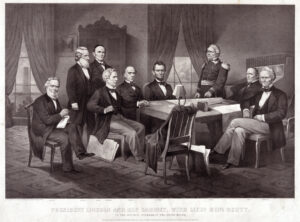 than saving the crumbling union. In an August 1862 letter to New York Tribune editor Horace Greeley, Lincoln confessed that, “My paramount object in this struggle is to save the Union, and it is not either to save or to destroy slavery.” I never knew that, somehow. Lincoln was highly patriotic, and his objective was that of hoping that a strong statement declaring a national policy of emancipation would stimulate a rush of the South’s enslaved people into the ranks of the Union Army. He hoped that such a rush of manpower would resupply the Union forces, while depleting the Confederacy’s labor force, on which it depended to wage war against the North. Lincoln was against slavery, but he was for America more. That seems like a strange compromise, but I assume he thought freeing the slaves was a fight for another day. That decision would eventually get him killed.
than saving the crumbling union. In an August 1862 letter to New York Tribune editor Horace Greeley, Lincoln confessed that, “My paramount object in this struggle is to save the Union, and it is not either to save or to destroy slavery.” I never knew that, somehow. Lincoln was highly patriotic, and his objective was that of hoping that a strong statement declaring a national policy of emancipation would stimulate a rush of the South’s enslaved people into the ranks of the Union Army. He hoped that such a rush of manpower would resupply the Union forces, while depleting the Confederacy’s labor force, on which it depended to wage war against the North. Lincoln was against slavery, but he was for America more. That seems like a strange compromise, but I assume he thought freeing the slaves was a fight for another day. That decision would eventually get him killed.
Lincoln waited to unveil the proclamation until he could do so on the heels of a successful Union military 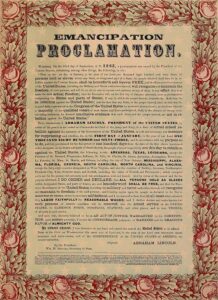 advance, just as he had promised. After a victory at Antietam, Lincoln publicly announced a preliminary Emancipation Proclamation on September 22, 1862, declaring all enslaved people free in the rebellious states as of January 1, 1863. Lincoln and his advisors limited the proclamation’s language to slavery in states outside of federal control as of 1862, which might seem odd, but if the war was lost by the Union, it wouldn’t have mattered anyway, and he needed the support of the North. Not all of the people in the north were in total agreement with the freeing of the slaves, although the vast majority were. The proclamation did not address the contentious issue of slavery within the nation’s border states. In his attempt to appease all parties, Lincoln left many loopholes open that civil rights advocates would be forced to tackle in the future. I have learned, in reference to politics, that many a politician has been forced to practice a little “appeasing” in order to get anything accomplished. I can’t say that is a good thing, but rather that it is sometimes a necessary thing.
advance, just as he had promised. After a victory at Antietam, Lincoln publicly announced a preliminary Emancipation Proclamation on September 22, 1862, declaring all enslaved people free in the rebellious states as of January 1, 1863. Lincoln and his advisors limited the proclamation’s language to slavery in states outside of federal control as of 1862, which might seem odd, but if the war was lost by the Union, it wouldn’t have mattered anyway, and he needed the support of the North. Not all of the people in the north were in total agreement with the freeing of the slaves, although the vast majority were. The proclamation did not address the contentious issue of slavery within the nation’s border states. In his attempt to appease all parties, Lincoln left many loopholes open that civil rights advocates would be forced to tackle in the future. I have learned, in reference to politics, that many a politician has been forced to practice a little “appeasing” in order to get anything accomplished. I can’t say that is a good thing, but rather that it is sometimes a necessary thing.

 My grandniece, Manuela Ortiz joined our family on July 18, 2021, when she married my grandnephew, James Renville. Manuela is such a happy person, and she brings so much sunshine into the lives of our family. She is an excellent dancer, and James is learning to dance too. They have even done some videos of them dancing and placed them online. Not everyone has the coordination to do things like Salsa dancing, but Manuela certainly does…and I’ll have to leave that to her. It’s best that way.
My grandniece, Manuela Ortiz joined our family on July 18, 2021, when she married my grandnephew, James Renville. Manuela is such a happy person, and she brings so much sunshine into the lives of our family. She is an excellent dancer, and James is learning to dance too. They have even done some videos of them dancing and placed them online. Not everyone has the coordination to do things like Salsa dancing, but Manuela certainly does…and I’ll have to leave that to her. It’s best that way.
Speaking fluent Spanish makes Manuela as asset to Wyoming 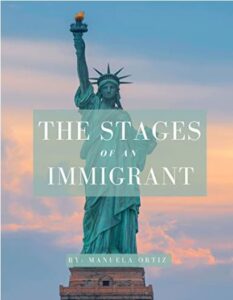 Housing Network, where she is a housing counselor. When Manuela first came to America from Columbia, it was with the intent to study English, so that when she went back home, she could move up in her company. Things changed as time went by, and before long, she knew that she wanted to immigrate to America permanently. That was in the works, when she met her future husband, my grandnephew, James Renville. They met in 2019 and have been inseparable ever since.
Housing Network, where she is a housing counselor. When Manuela first came to America from Columbia, it was with the intent to study English, so that when she went back home, she could move up in her company. Things changed as time went by, and before long, she knew that she wanted to immigrate to America permanently. That was in the works, when she met her future husband, my grandnephew, James Renville. They met in 2019 and have been inseparable ever since.
Recently, Manuela decided to write an e-book called The Stages of an Immigrant: Stories of an Immigrant. In her book, she tells about her own experiences as she navigated the immigration system of the United States. We are all very proud of Manuela and her journey to become an American citizen the right way.
This past Christmas, Manuela got to go back to Columbia to visit her family for the holidays. Having been here when Covid hit, she hasn’t been able to go back home, and that has been so hard. Manuela has embraced her 
 Wyoming family, and totally loves her Wyoming Cowboy (her husband, James), but this was a special trip and very fun for her. Aside from the climate difference, there are many different customs that go along with the holidays too. The decorations alone are very different. I’m sure that as the years go by, Manuela will incorporate some of her family’s traditions into Christmases here and maybe some of ours in future Christmases there. Today is Manuela’s birthday. Happy birthday Manuela!! Have a great day!! We love you!!
Wyoming family, and totally loves her Wyoming Cowboy (her husband, James), but this was a special trip and very fun for her. Aside from the climate difference, there are many different customs that go along with the holidays too. The decorations alone are very different. I’m sure that as the years go by, Manuela will incorporate some of her family’s traditions into Christmases here and maybe some of ours in future Christmases there. Today is Manuela’s birthday. Happy birthday Manuela!! Have a great day!! We love you!!

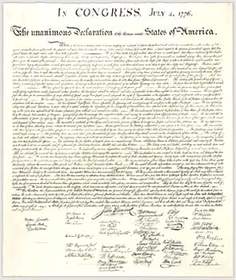 Most of us think of everything changing instantly when the Declaration of Independence was signed, and officially it did, but there was more to it than that. After years of oppression under the rulership of the British, the citizens of the 13 colonies had had enough. They formed the Continental Congress. The term “Continental Congress” most specifically refers to the First and Second Congresses of 1774–1781 and, at the time, was also used to refer to the Congress of the Confederation of 1781–1789, which operated as the first national government of the United States until being replaced under the Constitution of the United States. The 56 delegates to the Second Continental Congress represented the 13 colonies, 12 of which voted to approve the Declaration of Independence on July 4, 1776…our accepted day of Independence. The signing of the United States Declaration of Independence actually occurred on August 2, 1776, at the Pennsylvania State House in Philadelphia, which later to become known as Independence Hall. I suppose that a purist might insist that August 2nd should be our Independence Day, but the 56 delegates to the Second Continental Congress felt like once it was agreed upon, it was done. The signing was merely a technicality.
Most of us think of everything changing instantly when the Declaration of Independence was signed, and officially it did, but there was more to it than that. After years of oppression under the rulership of the British, the citizens of the 13 colonies had had enough. They formed the Continental Congress. The term “Continental Congress” most specifically refers to the First and Second Congresses of 1774–1781 and, at the time, was also used to refer to the Congress of the Confederation of 1781–1789, which operated as the first national government of the United States until being replaced under the Constitution of the United States. The 56 delegates to the Second Continental Congress represented the 13 colonies, 12 of which voted to approve the Declaration of Independence on July 4, 1776…our accepted day of Independence. The signing of the United States Declaration of Independence actually occurred on August 2, 1776, at the Pennsylvania State House in Philadelphia, which later to become known as Independence Hall. I suppose that a purist might insist that August 2nd should be our Independence Day, but the 56 delegates to the Second Continental Congress felt like once it was agreed upon, it was done. The signing was merely a technicality.
For the British government, neither of those days was acceptable, nor was the day they found out about the plan of the 13 colonies to gain their independence. In fact, that day…August 10, 1776, was the least acceptable day of all, because the British had no intention of giving the Colonies their independence…not without a fight anyway. When the news reached London, the British saw the conflict, centered in Massachusetts, as a local uprising within the British empire. Some Americans saw it that way too, but the reality is that the Declaration of Independence transformed the 13 British colonies into American states. King George III saw it as a colonial rebellion, but the Americans saw it as a struggle for their rights as British citizens. However, when Parliament continued to oppose any reform and remained unwilling to negotiate with the American rebels and instead hired Hessians, German mercenaries, to help the British army crush the rebellion, the Continental Congress began to pass measures abolishing British authority in the colonies. It was a brave move that would cost many of the 56 signers more than they could ever have imagined.
Following the signing of the Declaration of Independence, five of the signers were captured by the British and labeled as traitors. They were tortured before they died. Twelve of them had their homes ransacked and burned. Two lost their sons, who served in the Revolutionary War. Another two had sons captured, and nine of the 56 fought and died from wounds or hardships of the Revolutionary War. These men knew the risks they were taking. They knew that signing the Declaration of Independence very likely would cost them their lives. Nevertheless, they also knew that they couldn’t let the tyranny continue any longer. They had come to America to escape the tyrannical British government, and they could not allow the British government to make them slaves again. They signed, knowing they would likely die, but they saw no other way. These men weren’t soldiers…so, who were they. Twenty-four were lawyers and jurists. Eleven were merchants. Nine were farmers and plantation owners. All of them were men of means and well-educated, but they signed the Declaration of 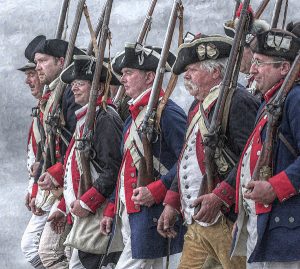
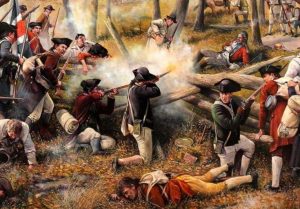 Independence, knowing that the penalty would be death if they were captured. These men had their livelihood threatened and destroyed, their homes confiscated and sold, and some were threatened so badly that they had to constantly move their families from place to place. Still, not one of them saw this as one option of many. When it came to taking their country back, they saw it as the only option.
Independence, knowing that the penalty would be death if they were captured. These men had their livelihood threatened and destroyed, their homes confiscated and sold, and some were threatened so badly that they had to constantly move their families from place to place. Still, not one of them saw this as one option of many. When it came to taking their country back, they saw it as the only option.

 It hardly seems possible that 18 years have passed since our nation was brutally attacked on our own soil by Al-Qaeda terrorists, and yet sometimes it seems like so many people who are adults now, don’t really remember 9-11, so they don’t understand the importance. It’s not an unusual thing, I guess, because they were only told about what happened. It might seem like a movie, more than a reality. Nevertheless, it did happen. On that dreadful day, a series of four coordinated terrorist attacks by the Islamic group, Al-Qaeda were carried out against the United States on the morning of Tuesday, September 11, 2001. The attacks killed 2,996 people, injured over 6,000 others, and caused at least $10 billion in infrastructure and property damage. Additional people died of 9/11-related cancer and respiratory diseases in the months and years following the attacks. We, the people of the United States, sat stunned in front of our television sets, trying to grasp what had happened. We were shocked, angry, and terribly grieved. We vowed never to forget. And most of us have not forgotten.
It hardly seems possible that 18 years have passed since our nation was brutally attacked on our own soil by Al-Qaeda terrorists, and yet sometimes it seems like so many people who are adults now, don’t really remember 9-11, so they don’t understand the importance. It’s not an unusual thing, I guess, because they were only told about what happened. It might seem like a movie, more than a reality. Nevertheless, it did happen. On that dreadful day, a series of four coordinated terrorist attacks by the Islamic group, Al-Qaeda were carried out against the United States on the morning of Tuesday, September 11, 2001. The attacks killed 2,996 people, injured over 6,000 others, and caused at least $10 billion in infrastructure and property damage. Additional people died of 9/11-related cancer and respiratory diseases in the months and years following the attacks. We, the people of the United States, sat stunned in front of our television sets, trying to grasp what had happened. We were shocked, angry, and terribly grieved. We vowed never to forget. And most of us have not forgotten.
Still, with time comes acceptance. Not that I think that is a good thing, because with acceptance comes complacency. We feel like we can’t change anything, so the best solution is to simply get along. Don’t rock the boat. Try to live together in peace. It all sounds so loving, so…Christian. Unfortunately, the only ones that are trying to “get along and live together in peace,” are the Christians, and maybe the Jews, who have been through such things before, and are getting tired of being the target of slaughter. But, should we be trying to get along with the devil? We have seen the evil that comes with these hateful people who target innocent people who are just trying to live their lives. The don’t care about living in peace with us!! The only want us to comply with their demands.
I have seen so many people saying that they miss 9/12, and I think I agree with them. Yes that horrific day had happened…the unthinkable was in our midst. We were scratching through the rubble, trying to find yet one more alive, though not many would come out of the rubble. The survivors were, for the most part, those who managed to escape before the towers came down. Still, on 9/12, there was something else…there was determination, anger, and love for our fellow man. We were determined to rise out of the ashes, and take back our Pre-9/11 lives, to catch those who did this, and make them pay for what they had done. And we did!!
But then, as the years went by, we tried to get along, hoping that this would never happen again…an impossible feat. Our “get along” spirit did not stop other attacks. We began to hear of places like Benghazi, and 
 even the attack on the US Embassy in Kabul, Afghanistan this morning. The “get along” spirit wasn’t…isn’t working. They hate us simply because we are Christians and Jews, Americans…free people, who don’t believe as they do. September 11, 2001 was a horrible day, very likely the worst in the history of the United States, but I agree with so many others who say they miss 9/12, because on that day, we were no longer the “sleeping giant.” We woke up and realized that we can’t be complacent, because they will kill those who sit idly by and do nothing. We must either continue to fight for our freedom…or we will lose our freedom. We must begin again to recognize our enemy…foreign or domestic. The war hasn’t ended. It continues. We must fight for our freedoms.
even the attack on the US Embassy in Kabul, Afghanistan this morning. The “get along” spirit wasn’t…isn’t working. They hate us simply because we are Christians and Jews, Americans…free people, who don’t believe as they do. September 11, 2001 was a horrible day, very likely the worst in the history of the United States, but I agree with so many others who say they miss 9/12, because on that day, we were no longer the “sleeping giant.” We woke up and realized that we can’t be complacent, because they will kill those who sit idly by and do nothing. We must either continue to fight for our freedom…or we will lose our freedom. We must begin again to recognize our enemy…foreign or domestic. The war hasn’t ended. It continues. We must fight for our freedoms.
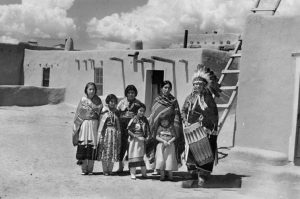 Most often, when we think of the early Americans, and their settlements, we think about the settlers who came over from Europe, but there were, of course, the many Indian tribes that existed here first. I’m not going to dispute whether the Indians or the White Man have more right to be here, because I truly believe that we should all be able to co-exist here after all these years, and that while treaties were broken many times, we have more than likely paid for this land a number of times, given the money that has been, and continues to be paid to the Native Americans. The oldest known culture in the United States was the Pueblo Indians, who lived in the Southwestern United States. Their name is Spanish for “stone masonry village dweller.” They are believed to be the descendants of three major cultures…the Mogollon, Hohokam, and Ancient Puebloans (Anasazi) Indians. I’m not sure how they would have come to be here, unless their ancestors were here first, but that is how the historians see it.
Most often, when we think of the early Americans, and their settlements, we think about the settlers who came over from Europe, but there were, of course, the many Indian tribes that existed here first. I’m not going to dispute whether the Indians or the White Man have more right to be here, because I truly believe that we should all be able to co-exist here after all these years, and that while treaties were broken many times, we have more than likely paid for this land a number of times, given the money that has been, and continues to be paid to the Native Americans. The oldest known culture in the United States was the Pueblo Indians, who lived in the Southwestern United States. Their name is Spanish for “stone masonry village dweller.” They are believed to be the descendants of three major cultures…the Mogollon, Hohokam, and Ancient Puebloans (Anasazi) Indians. I’m not sure how they would have come to be here, unless their ancestors were here first, but that is how the historians see it.
Over the years, the Ancient Puebloans, who had been a nomadic, hunter-gathering society, evolved into a sedentary culture. They made their homes in the Four Corners region of Colorado, New Mexico, Utah and Arizona. The Puebloans continued to hunt, but they also expanded to agriculture. They grew maze, corn, squash, and beans. They also raised turkeys and even developed a fairly complex irrigation system. They took up basket weaving and pottery, and became quite skilled in both. About this time, they began building the 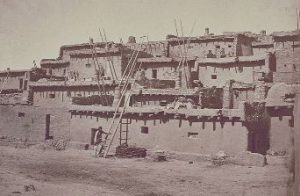 buildings we think about when we think of the Pueblo Indians…villages, often on top of high mesas or in hollowed-out natural caves at the base of canyons. These multiple-room dwellings and apartment like complexes, designed with stone or adobe masonry, were the forerunner of the later pueblos.
buildings we think about when we think of the Pueblo Indians…villages, often on top of high mesas or in hollowed-out natural caves at the base of canyons. These multiple-room dwellings and apartment like complexes, designed with stone or adobe masonry, were the forerunner of the later pueblos.
Sadly, even with their successful life changes, the Ancient Puebloans way of life declined in the 1300’s, probably due to drought and inter-tribal warfare. They migrated south, primarily into New Mexico and Arizona, becoming what is today known as the Pueblo people. For hundreds of years, these Pueblo descendants lived a similar lifestyle to their ancestors. They continued to survive by hunting and farming, and also building “new” apartment-like structures, sometimes several stories high. These new structures were made of cut sandstone faced with adobe, which is a combination of earth mixed with straw and water. Sometimes, the adobe was poured into forms or made into sun-dried bricks to build walls that are often several feet thick. The buildings had flat roofs, which served as working or resting places, as well as observation points to watch for approaching enemies and view ceremonial occasions. For better defense, the outer walls generally had no doors or windows, but instead, window openings in the roofs, with ladders leading into the interior.
 Each family unit consisted of a single room of the building unless the family grew too large. Then side-rooms were sometimes added. The houses of the pueblo were usually built around a central, open space or plaza in the middle of which was a “kiva,” a sunken chamber used for religious purposes. Each pueblo was an independent and separate community. The different pueblos shared similarities in language and customs, but each pueblo had its own chief, and sometimes two chiefs, a summer and winter chief, who alternated. Most important affairs, such was war, hunting, religion, and agriculture, however, were governed by priesthoods or secret societies. Each pueblo was almost a separate country.
Each family unit consisted of a single room of the building unless the family grew too large. Then side-rooms were sometimes added. The houses of the pueblo were usually built around a central, open space or plaza in the middle of which was a “kiva,” a sunken chamber used for religious purposes. Each pueblo was an independent and separate community. The different pueblos shared similarities in language and customs, but each pueblo had its own chief, and sometimes two chiefs, a summer and winter chief, who alternated. Most important affairs, such was war, hunting, religion, and agriculture, however, were governed by priesthoods or secret societies. Each pueblo was almost a separate country.
 When the colonists came over to the new world, they really didn’t know how they were going to make a living. They were most likely planning to raise their own crops, along with hunting and fishing, but the reality is that those things were only going to take them so far. They were going to need other things. In 1620, Plymouth Colony was founded in present-day Massachusetts. The settlers there had planned to make a living with cod fishing, but that wasn’t going very well. So, within a few years of their first fur export, the Plymouth colonists began concentrating entirely on the fur trade. They developed an economic system in which their chief crop, Indian corn, was traded with Native Americans to the north for highly valued beaver skins, which were then sold in England to pay the Plymouth Colony’s debts and buy necessary supplies.
When the colonists came over to the new world, they really didn’t know how they were going to make a living. They were most likely planning to raise their own crops, along with hunting and fishing, but the reality is that those things were only going to take them so far. They were going to need other things. In 1620, Plymouth Colony was founded in present-day Massachusetts. The settlers there had planned to make a living with cod fishing, but that wasn’t going very well. So, within a few years of their first fur export, the Plymouth colonists began concentrating entirely on the fur trade. They developed an economic system in which their chief crop, Indian corn, was traded with Native Americans to the north for highly valued beaver skins, which were then sold in England to pay the Plymouth Colony’s debts and buy necessary supplies.
In November 9, 1621, Robert Cushman a deacon and captain of the Fortune arrived with 35 new settlers for Plymouth Colony…the first new colonists since the settlement was founded over a year earlier. The plan was to drop off the settlers, and then a month later, head back to England with a cargo of furs to pay for supplies and to pay debts the colony owed to England. On December 13, 1621, Robert Cushman and the Fortune set sail back to England, but theirs was not to be a good voyage. During Cushman’s return to England, the Fortune was  captured by the French, and its valuable cargo of furs was taken. Cushman was detained on the Ile d’Dieu before being returned to England. The capture was due to a navigation error. About January 19, 1622, Fortune was overtaken and seized by a French warship, with those on board being held under guard in France for about a month and with its cargo taken. Fortune finally arrived back in the Thames on February 17, 1622.
captured by the French, and its valuable cargo of furs was taken. Cushman was detained on the Ile d’Dieu before being returned to England. The capture was due to a navigation error. About January 19, 1622, Fortune was overtaken and seized by a French warship, with those on board being held under guard in France for about a month and with its cargo taken. Fortune finally arrived back in the Thames on February 17, 1622.
The Fortune was 1/3 the size of the Mayflower, displacing 55 tons. The arrival of the vessel sent by the English investors, who had funded the Mayflower colonists, should have been a cause for celebration. But for the Pilgrims, Fortune was poorly named. The ship brought 35 new settlers, but none of the expected supplies. With new mouths to feed, rations were reduced by half. Worse, the investors demanded that the ship return immediately to England, stocked with trade goods. The Pilgrims complied by loading Fortune with “good clapboard as full as she could stow” and two hogsheads of beaver and otter skins, only to have them lost to the French, which the English investors did not seem to care about.
 After the Mayflower brought the Plymouth settlers, they struggled under the demands of their English investors for seven years. The investors also sent a letter criticizing the settlers because the Mayflower arrived back in England with an empty hold, and demanding that the Fortune return immediately filled with valuable goods. The colonists complied. For the next six years, they sent sizable shipments, especially of furs, back to England. But the goods yielded far less profit than the investors expected, and as the seven year mark approached, the colonists were still in debt. Finally, 27 of them pooled their personal resources and paid off the debt. Once free of the requirement to live communally and hold all property in common, the original settlers divided the land into private lots, and the era of the “Old Comers” was over.
After the Mayflower brought the Plymouth settlers, they struggled under the demands of their English investors for seven years. The investors also sent a letter criticizing the settlers because the Mayflower arrived back in England with an empty hold, and demanding that the Fortune return immediately filled with valuable goods. The colonists complied. For the next six years, they sent sizable shipments, especially of furs, back to England. But the goods yielded far less profit than the investors expected, and as the seven year mark approached, the colonists were still in debt. Finally, 27 of them pooled their personal resources and paid off the debt. Once free of the requirement to live communally and hold all property in common, the original settlers divided the land into private lots, and the era of the “Old Comers” was over.
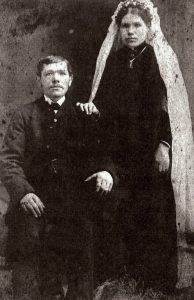 My great grandparents, Henriette and Carl Schumacher were both of German descent. They both came to America at different times…Grandma in 1882 and Grandpa in 1884. They met at a baptism and fell in love. They were married, and had 7 children, one of whom died as a little girl. They were just two of the many German people who have come to this country as far back as the colonial days. Of course, there were many German people who came here before my great grandparents. One of the most notable groups was the 13 German Mennonite families from Krefeld who landed in Philadelphia. These families founded Germantown, Pennsylvania on October 6, 1683. The settlement was the first German establishment in the original thirteen American colonies.
My great grandparents, Henriette and Carl Schumacher were both of German descent. They both came to America at different times…Grandma in 1882 and Grandpa in 1884. They met at a baptism and fell in love. They were married, and had 7 children, one of whom died as a little girl. They were just two of the many German people who have come to this country as far back as the colonial days. Of course, there were many German people who came here before my great grandparents. One of the most notable groups was the 13 German Mennonite families from Krefeld who landed in Philadelphia. These families founded Germantown, Pennsylvania on October 6, 1683. The settlement was the first German establishment in the original thirteen American colonies.
There are many people in the United States who can trace their ancestry back to German roots in one way or another, and the German-American people have been a building block in this nation. These were people who wanted to come here for a better 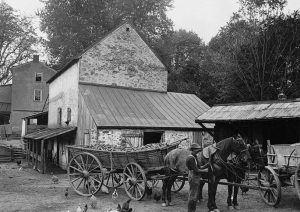 life, or to escape some of the horrors of the German government, and I for one am thankful that my grandparents immigrated to this country. President Ronald Reagan believed that the German-American heritage was so important to this nation, that in 1983, he proclaimed October 6 as German-American Day to celebrate and honor the 300th anniversary of German American immigration and culture to the United States. On August 6, 1987, Congress approved S.J. Resolution 108, designating October 6, 1987, as German-American Day. It became Public Law 100-104 when President Reagan signed it on August 18, 1987. Proclamation number 5719 was issued on October 2, 1987, by President Reagan in a formal ceremony in the White House Rose Garden, at which time the President called on Americans to observe the Day with appropriate ceremonies and activities. Now for many people, that might include German beer, as well as Oktoberfest activities…basically a party.
life, or to escape some of the horrors of the German government, and I for one am thankful that my grandparents immigrated to this country. President Ronald Reagan believed that the German-American heritage was so important to this nation, that in 1983, he proclaimed October 6 as German-American Day to celebrate and honor the 300th anniversary of German American immigration and culture to the United States. On August 6, 1987, Congress approved S.J. Resolution 108, designating October 6, 1987, as German-American Day. It became Public Law 100-104 when President Reagan signed it on August 18, 1987. Proclamation number 5719 was issued on October 2, 1987, by President Reagan in a formal ceremony in the White House Rose Garden, at which time the President called on Americans to observe the Day with appropriate ceremonies and activities. Now for many people, that might include German beer, as well as Oktoberfest activities…basically a party.
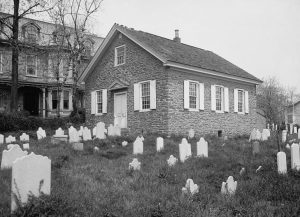 The Germantown, Pennsylvania, settlers organized the first petition in the English colonies to abolish slavery in 1688. Originally known as German Day, the holiday was celebrated for the first time in Philadelphia in 1883, on the occasion of the 200th anniversary of the arrival of the settlers from Krefeld. Similar celebrations developed later in other parts of the country, but the custom died out during World War I as a result of the anti-German sentiment that prevailed at the time. Then, in 1983, President Reagan decided that the time had come to reinstate it. I think it’s a good thing, because those German people who left Germany, were not like the German government was. They were truly good people, who were good for this nation.
The Germantown, Pennsylvania, settlers organized the first petition in the English colonies to abolish slavery in 1688. Originally known as German Day, the holiday was celebrated for the first time in Philadelphia in 1883, on the occasion of the 200th anniversary of the arrival of the settlers from Krefeld. Similar celebrations developed later in other parts of the country, but the custom died out during World War I as a result of the anti-German sentiment that prevailed at the time. Then, in 1983, President Reagan decided that the time had come to reinstate it. I think it’s a good thing, because those German people who left Germany, were not like the German government was. They were truly good people, who were good for this nation.
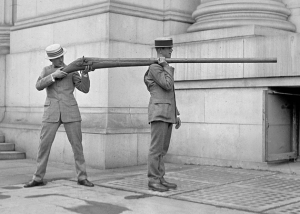 Most gun lovers have seen just about every gun out there, and I’m pretty sure that the gun lovers I know will most likely know about the Punt Gun. The punt gun gave a whole new meaning to the term packing. A punt gun is a type of extremely large shotgun used in the 19th and early 20th centuries for shooting large numbers of waterfowl for commercial harvesting operations. Punt guns were usually custom designed and so varied widely, but could have bore diameters exceeding 2 inches and fire over a pound of shot at a time. A single shot could kill over 50 waterfowl resting on the water’s surface.
Most gun lovers have seen just about every gun out there, and I’m pretty sure that the gun lovers I know will most likely know about the Punt Gun. The punt gun gave a whole new meaning to the term packing. A punt gun is a type of extremely large shotgun used in the 19th and early 20th centuries for shooting large numbers of waterfowl for commercial harvesting operations. Punt guns were usually custom designed and so varied widely, but could have bore diameters exceeding 2 inches and fire over a pound of shot at a time. A single shot could kill over 50 waterfowl resting on the water’s surface.
The guns were too big to hold and the recoil so large that they were mounted 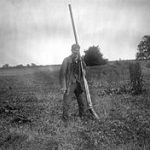 directly on the punts, which is a type of boat used for hunting, hence their name. Hunters would maneuver their punts quietly into line and range of the flock of birds, resting on the water, using poles or oars to avoid startling the birds. Generally the gun was fixed to the punt, so the hunter would maneuver the entire boat in order to aim the gun. The guns were sufficiently powerful, and the punts themselves sufficiently small, so that firing the gun often propelled the punt backwards several inches or more. To improve efficiency, hunters could work in fleets of up to around ten punts. In many ways it was a cruel way to hunt. Waterfowl flocks were severely depleted in the United States, so by the 1860s most states had banned the practice.
directly on the punts, which is a type of boat used for hunting, hence their name. Hunters would maneuver their punts quietly into line and range of the flock of birds, resting on the water, using poles or oars to avoid startling the birds. Generally the gun was fixed to the punt, so the hunter would maneuver the entire boat in order to aim the gun. The guns were sufficiently powerful, and the punts themselves sufficiently small, so that firing the gun often propelled the punt backwards several inches or more. To improve efficiency, hunters could work in fleets of up to around ten punts. In many ways it was a cruel way to hunt. Waterfowl flocks were severely depleted in the United States, so by the 1860s most states had banned the practice.
The Lacey Act of 1900 banned 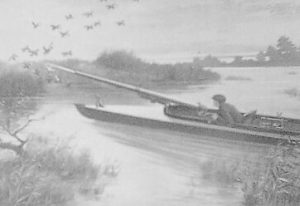 the transport of wild game across state lines, and the practice of market hunting was outlawed by a series of federal laws in 1918. There were still about 50 punt guns in the United Kingdom, as shown by a 1995 survey. The UK limits punt guns to a bore diameter of 1.75 inches by law. Since Queen Victoria’s Diamond Jubilee in 1897 there has been a punt gun salute every Coronation and Jubilee over Cowbit Wash in Cowbit, Lincolnshire, England. During the Diamond Jubilee of Elizabeth II, 21 punt gun rounds were fired separately, followed by the guns all being fired simultaneously. While the original use of punt guns was almost cruel, I suppose their latter uses is a much more noble way to use the guns.
the transport of wild game across state lines, and the practice of market hunting was outlawed by a series of federal laws in 1918. There were still about 50 punt guns in the United Kingdom, as shown by a 1995 survey. The UK limits punt guns to a bore diameter of 1.75 inches by law. Since Queen Victoria’s Diamond Jubilee in 1897 there has been a punt gun salute every Coronation and Jubilee over Cowbit Wash in Cowbit, Lincolnshire, England. During the Diamond Jubilee of Elizabeth II, 21 punt gun rounds were fired separately, followed by the guns all being fired simultaneously. While the original use of punt guns was almost cruel, I suppose their latter uses is a much more noble way to use the guns.

